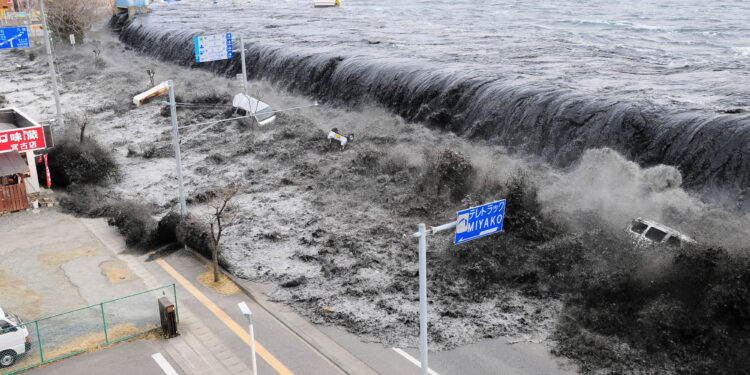On March 11, 2011, Japan experienced one of the most catastrophic natural disasters in its modern history. At 2:46 p.m. local time, a massive 9.0-magnitude earthquake struck off the northeastern coast of Japan, generating powerful tsunami waves that would devastate coastal communities within minutes.
The earthquake was the most powerful ever recorded in Japan and the fourth most powerful in world history since modern record-keeping began. The epicenter was located approximately 70 kilometres east of the Oshika Peninsula of Tōhoku, with the hypocenter at an underwater depth of about 29 kilometers.
Within 30 minutes of the earthquake, tsunami waves reaching heights of up to 40 meters (131 feet) in some areas crashed into Japan’s eastern coastline. The city of Sendai and surrounding Miyagi Prefecture bore the brunt of the disaster, though the devastation stretched across much of northeastern Japan. Entire towns were swept away as the wall of water travelled up to 10 kilometres inland in some areas.
The human toll was staggering: nearly 20,000 people lost their lives, with the majority of deaths caused by drowning. More than 450,000 people were displaced, and forced to live in temporary shelters as their homes and communities were destroyed.
Beyond the immediate humanitarian crisis, the disaster triggered a serious nuclear accident at the Fukushima Daiichi Nuclear Power Plant. Tsunami waves overwhelmed the plant’s seawall and disabled the cooling systems, leading to nuclear meltdowns, hydrogen explosions, and the release of radioactive materials. It became the most severe nuclear accident since the 1986 Chornobyl disaster.
The economic impact was equally profound. Japan faced reconstruction costs exceeding $235 billion, making it the costliest natural disaster in world history. Industries from automotive manufacturing to electronics experienced significant disruptions as supply chains were severed.
Yet amid the devastation, the Japanese people demonstrated remarkable resilience. The nation’s response was characterized by extraordinary discipline and community solidarity. International aid poured in from around the world as countries offered assistance and support.
The 2011 disaster fundamentally altered Japan’s approach to disaster preparedness, energy policy, and nuclear safety. More stringent building codes, improved tsunami warning systems, and a shift away from nuclear power emerged as lasting consequences.
Today, while much of the physical reconstruction has been completed, the psychological scars remain. Memorial sites and annual commemorations ensure that the lessons learned from this catastrophic event continue to influence Japan’s future resilience against natural disasters.
editorial newshub-finance


Recent Comments